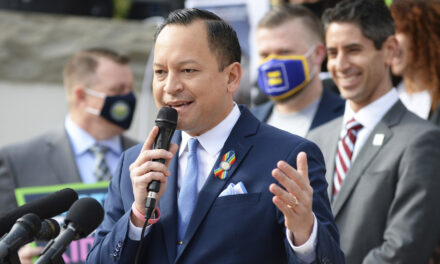
Opinion | Imagining the Trump Presidency That Wasn’t
October 2017: Following the massacre of some 60 people (and the injury of more than 800) by a lone gunman in Las Vegas, Trump delivers a prime-time address on the subject of gun control. He observes that, at the time the Second Amendment was written, a skilled marksman could fire, at most, three or four rounds a minute.
“The right to bear arms cannot become a license for American carnage,” he says, borrowing a line from his inaugural address. “We’re either going to get serious about regulating the ability of just about anyone to get access to high-powered, rapid-firing weapons, or we’re going to start requiring every gun owner to spend every other Sunday doing drills in their local ‘well-regulated militia’ — just like it says in the Constitution.”
May 2018: In the face of a migration crisis on the U.S.-Mexico border, Trump proposes a grand-immigration bargain with congressional Democrats: full funding for a border wall, in exchange for a path to citizenship for Dreamers. Later, he expands the proposal to a $2 trillion infrastructure bill with “Buy American” provisions, in exchange for expedited environmental reviews for federal projects and a repeal of the Jim Crow-era Davis-Bacon Act, which has long inflated the labor costs of public works.
June 2018: Invoking Gerald Ford’s congressional testimony regarding his presidential pardon of Richard Nixon, Trump agrees to sit before the House Intelligence Committee on the subject of his campaign’s links to Russia. He expresses regret for hiring Paul Manafort as campaign chairman and for his praise for WikiLeaks, which he concedes interfered in the 2016 election. But he challenges the factual basis of the Steele dossier and the legal basis for the F.B.I.’s investigation of his campaign.
July 2019: In a telephone call with Ukraine’s president, Volodymyr Zelensky, Trump makes no mention of the Biden family.
February 2020: Warning Americans that the novel coronavirus risks becoming the greatest global health emergency of the century, Trump tells Americans that we can beat this, and keep the economy strong, by adopting common-sense social-distancing measures: avoiding crowded public transportation, sports arenas, concerts and bars. Going further than even his own health experts recommended, he talks up his well-known germophobia and insists that everyone in the White House wear a face mask. But he also warns state governors that attempts to lock down entire communities in an effort to contain the spread is a futile cure that will impose ruinous economic costs.
June 2020: After the killing of George Floyd, Trump convenes a conference of law enforcement officials and others to develop a set of national police standards. He asks the Democratic Representative Val Demings of Florida to lead the conference.
For many conservatives (including me), some of these proposals would have been hard to accept. Liberals would have their own objections to some of this ideological jujitsu. Then again, what an interesting and fruitful administration it might have been. America still awaits a politically incorrect president — while it waits out the jerk.
The Times is committed to publishing a diversity of letters to the editor. We’d like to hear what you think about this or any of our articles. Here are some tips. And here’s our email: [email protected].
Follow The New York Times Opinion section on Facebook, Twitter (@NYTopinion) and Instagram.


















